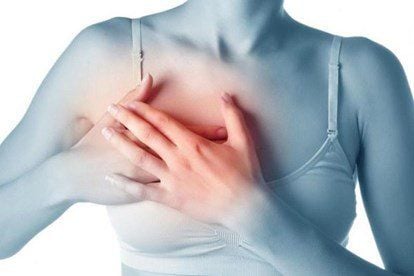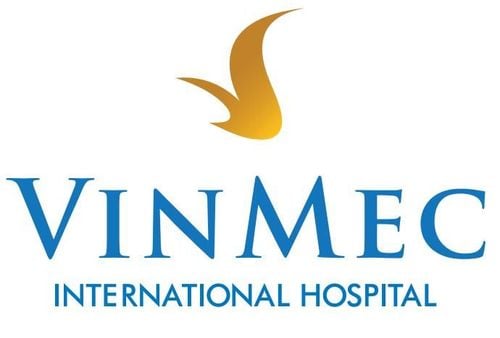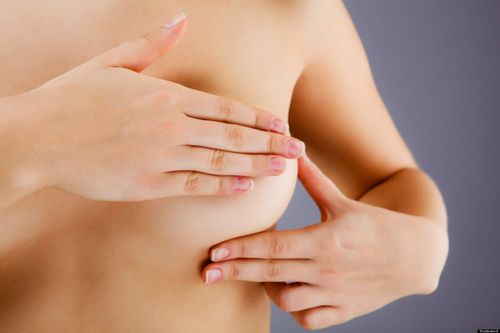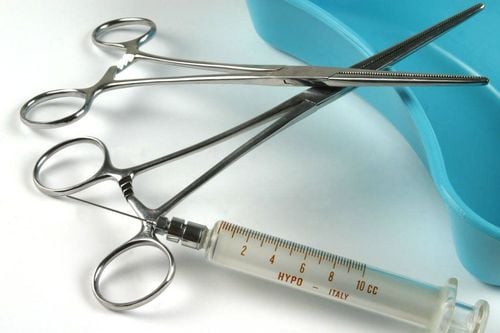This is an automatically translated article.
The article was written by doctors of Internal Oncology - Radiation Oncology Center - Vinmec Times City International General Hospital.A mammogram shows the type of breast tissue a person has. First of all, let's learn about breast tissue. The breast is the tissue above the chest muscle. Women's breasts are made of specialized milk-producing tissue (glandular tissue) and fatty tissue. The amount of fat determines the size of the breast. Breast tissue varies in density with each individual and over time.
1. What is fibroadenoma? Is the disease related to cancer?
A mammogram for information about the density and composition of the breast.Breast tissue or mammary gland density
Low density tissue : Contains mostly fatty tissue. Studies show that women whose breasts contain mostly fatty tissue have a lower risk of breast cancer than those with other types. Dense or extremely dense fibrous tissue (high density): Dense breast tissue, people with dense breasts may have a higher risk of breast cancer than those with low breast density. Fibrocystic breast: The breast is a combination of fatty tissue and scattered fibrous tissue. FDA statistics show that 40% of women in the United States have this type of tissue. Women with this type of tissue have a higher risk of developing breast cancer than those with low breast density, but the risk is lower than those with high breast density.
2. Symptoms of fibroadenoma
People with fibroids always feel changes throughout their monthly cycle. If the same changes happen every month, there is nothing to worry about. Anyone who notices a new or unusual lump should see their doctor for an examination. Also note that lumps in the breast are not usually caused by breast cancer. There are many types of breast lumps, including cysts and fibroids.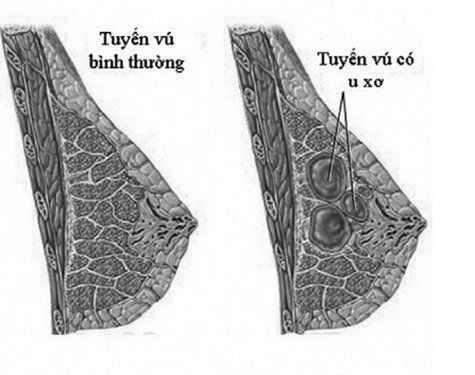
U xơ tuyến vú
3. Causes of breast fibroadenoma
The reason why some people have fibroadenomas and others don't is still unknown.One factor is fluctuations in reproductive hormones, such as estrogen. Estrogen levels rise and fall during the menstrual cycle which can lead to breast changes and discomfort.
Soft, swollen and painful lumps may appear before menstruation but usually disappear after.
People with a family history of dense breast tissue or fibrocystic breast tissue are more likely to develop this condition.
As we age, breasts tend to become less dense. The ratio of fat to fibrous tissue will also change, and there will be fewer fibroids.
4. Diagnosis of fibroadenomas of the breast
Breast ultrasound and mammograms help diagnose breast lumps. Breast tumors will be classified according to BIRADS - this is the International Classification of Breast Tumors - to plan for follow-up or an immediate biopsy is required.A biopsy can determine whether a tumor is cancerous.
During a biopsy, the doctor removes some tissue or fluid from the breast for laboratory testing to see if the lump is cancerous, a cyst, or a benign tumor. If the biopsy shows cancer, the person will need further treatment.
Currently at Vinmec Times City International Hospital, it is possible to perform all techniques to diagnose breast tumors, especially breast tumor biopsy techniques with vacuum support (the doctor can remove tumor without surgery, leaving no scars on the chest)
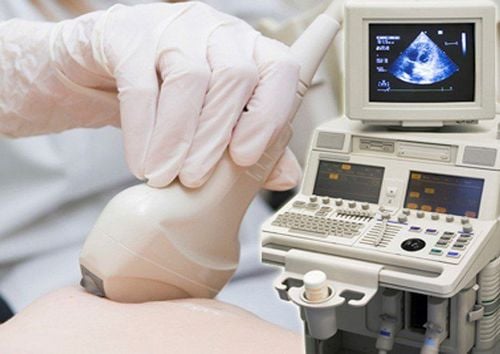
Siêu âm vú để chẩn đoán u vú
5. Treatment of fibroadenomas of the breast
Fibrocystic breast disease is not a disease, and does not require treatment.If pain is felt, pain relievers such as ibuprofen can help relieve symptoms. People who smoke or use a lot of caffeine see their tumors decrease when they quit or reduce their use of these substances.
Breast tissue does not increase the risk of developing breast cancer, but can make the changes harder to detect.
Screening is recommended from age 40. They also encourage people at risk of breast cancer to have a mammogram every 2 years on average from the age of 50 to 74.
Fibrocystic breast is a common condition that can cause breast pain or swelling at certain times during the menstrual cycle.
Fibrocystic breasts are not cancerous and do not usually cause health problems, but lumps in the breast raise concerns about cancer.
Women need to notice any changes, screening helps in early diagnosis and prompt treatment if problems arise.
Customers can go directly to Vinmec Times City to visit or contact hotline 0243 9743 556 for support.
Please dial HOTLINE for more information or register for an appointment HERE. Download MyVinmec app to make appointments faster and to manage your bookings easily.
Articles refer to the source: Medical news 2019



